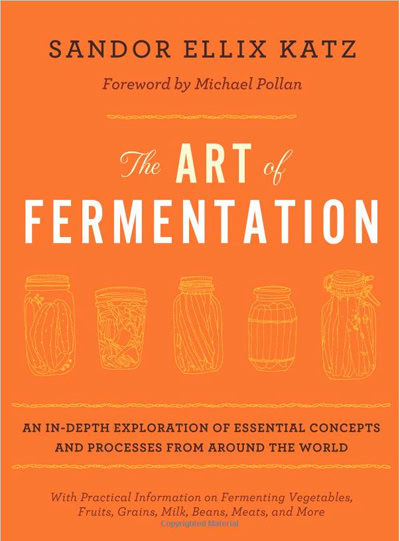What do yogurt, sauerkraut, bread and wine all have in common All of them depend on fermentation for their existence. Fermentation one of the world’s earliest methods of preserving food encourages the proliferation of good bacteria in order to crowd out the bad bacteria that make foods spoil quickly. Fermentation allows milk, with an unrefrigerated shelf life of hours, to become shelf-stable cheese or thick yogurt. Fermentation of vegetables into pickles, sauerkraut and kimchi safely extends the bounty of summer into the cold winter months. Fermentation of grains creates delicious sourdough breads, which ward of staling longer than quick-yeast loaves, while making gluten proteins more easily digestible. And fermentation creates some of the world’s favorite beverages, including wines and beers.
Yet despite millennia of successful fermentation by food producers of coaxing the growth of good bacteria today some forces exalt the concept that ideally foods should be irradiated to remove all bacteria, a philosophy that seems to say, the only good food is a dead food. To counter this movement and to celebrate living, life-giving foods, Sandor Katz is leading a popular revival of traditional fermentation techniques.
Katz, author of the book The Art of Fermentation (Chelsea Green, 2012), describes fermentation as the flavorful space between fresh and rotten
where most of human cultures’ most prized delicacies and culinary achievements exist. His book ranges around the world, introducing readers to traditional foods like Korean kimchi, Eastern European kvass, Japanese miso, and Indian dosa.
But Katz doesn’t stop at simply describing these foods and their place in traditional diets. He asks us all to roll up our sleeves, and join him in trying our hand at reproducing as many fermented foods as we can. Katz does not take the distant role of expert looking down from on high; instead, he positions himself as the older brother, an approachable figure who’s a few steps ahead of us, but doesn’t necessarily know all the answers. The Art of Fermentation is, in fact, peppered with asides from other people who have taken Katz’s workshops or have otherwise been conducting their own fermentation experiments, and offer their own take on the best way to proceed.
There are no recipes in The Art of Fermentation, no exact blueprints for reproducing any fermented foods. It’s as if Katz wants to remind us that fermentation is an inexact science, one that must be sensed with our right brains rather than analyzed, with careful measurements, in our left brains. Add enough water Sprinkle a little salt Let sit until it tastes right Those who simply want to be told what to do, mechanically, will be indignant. Sandor Katz, however, holds firm that if you’re really serious about fermenting foods, you need to just try it, learn from your mistakes, and keep trying some more. This is the way all of us used to cook and eat for most of history and it’s a humbling but effective approach.
The book starts with background information on the history and health benefits of fermentation. Evidence is quickly mounting that some chronic diseases and digestive problems may be related to drastic recent changes in our gut bacteria caused by modern foods. As Katz aptly writes, If sterilized, processed food is starving our microbiota of genetic stimulation we can indulge ourselves and eat a variety of bacteria-rich living foods, precisely in order to enhance our metabolic capabilities, our immune function, and many other regulatory physiological functions.Although Katz considers fermentation an underground food movement, even mainstream publications (like Food and Nutrition, the magazine of the Academy of Nutrition and Dietetics, are now touting the History and Health Benefits of Fermented Food.)
After a chapter on equipment, the core of the book consists of eight chapters that each center on a food group, such as Fermenting Vegetables, Fermenting Milk, and Fermenting Grains and Starchy Tubors. Rounding out the thick tome are two final chapters, one with tips for starting your own fermenting business, and one explaining how the power of fermentation can be used for non-food ends from aromatherapy and waste management to energy production and the disposal of human bodies.
Want to try your own fermentation experiments Buy the book or visit Sandor Katz’s website wildfermentation.com where you can check out the author’s upcoming workshop schedule or join in on comments from a lively community talking about miso-fermented egg yolks or peanut butter and kimchi sandwiches. We invite you to add your comments here at The Oldways Blog, if you’ve been making your own fermented foods at home.
-Cynthia








Leave a comment